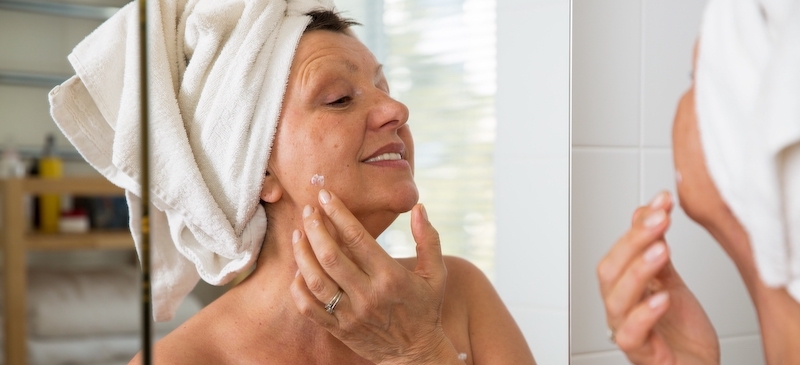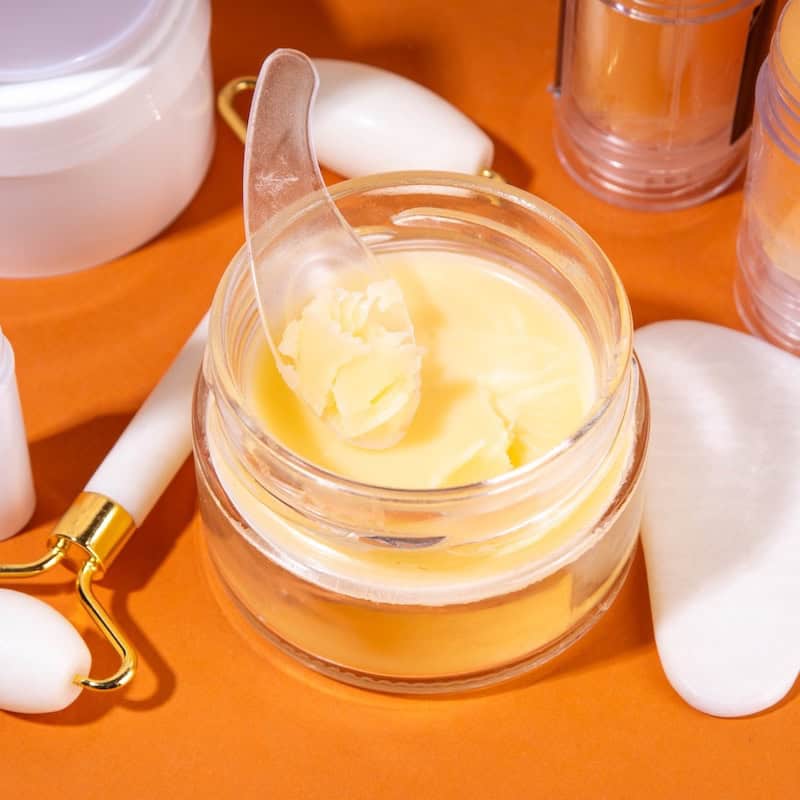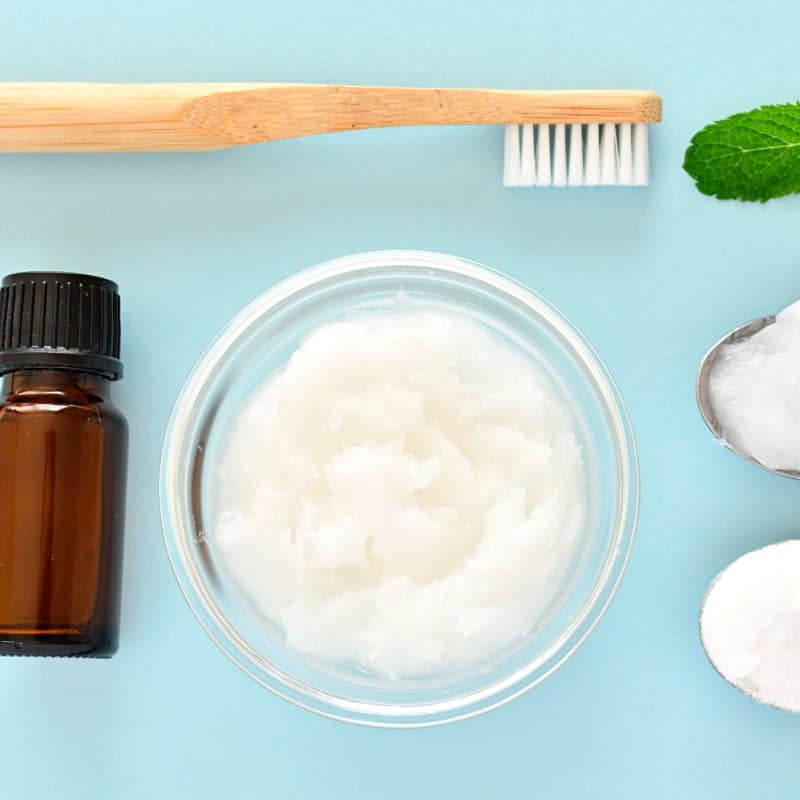This Dr. Axe content is medically reviewed or fact checked to ensure factually accurate information.
With strict editorial sourcing guidelines, we only link to academic research institutions, reputable media sites and, when research is available, medically peer-reviewed studies. Note that the numbers in parentheses (1, 2, etc.) are clickable links to these studies.
The information in our articles is NOT intended to replace a one-on-one relationship with a qualified health care professional and is not intended as medical advice.
This article is based on scientific evidence, written by experts and fact checked by our trained editorial staff. Note that the numbers in parentheses (1, 2, etc.) are clickable links to medically peer-reviewed studies.
Our team includes licensed nutritionists and dietitians, certified health education specialists, as well as certified strength and conditioning specialists, personal trainers and corrective exercise specialists. Our team aims to be not only thorough with its research, but also objective and unbiased.
The information in our articles is NOT intended to replace a one-on-one relationship with a qualified health care professional and is not intended as medical advice.
How to Build the Best Skin Care Routine: Steps & Tips for Every Skin Type
September 18, 2024

Having a well-structured natural skin care routine is essential to maintaining healthy, glowing skin, but with so many products and steps out there, it can be overwhelming to know where to start and what to include.
Whether you’re just beginning or looking to refine your regimen, understanding the best skin care routine, its proper order and how to tailor it to your skin type is key to achieving the best results.
This guide will walk you through the ideal skin care routine steps, including both morning and nighttime skin care routines, and provide tips on how to customize your routine to suit your skin type.
Skin Care Routine Steps
The foundation of any great skin care routine lies in understanding the right order to apply your products. Here’s a basic outline that you can follow for both your morning and nighttime regimen:
- Cleanser: Removes dirt, makeup and excess oil.
- Toner: Balances your skin’s pH and removes any leftover impurities.
- Exfoliator (2–3 times per week): Removes dead skin cells and smooths texture. This step helps reveal brighter, clearer skin and allows other products to penetrate more deeply.
- Mask (1–2 times per week): Choose a mask based on your skin’s needs — hydrating, detoxifying or brightening. This step is an extra boost for your skin.
- Serum: Targets specific skin concerns, like aging, acne or dullness.
- Spot Treatment: Treats acne or blemishes, usually with ingredients like benzoyl peroxide or salicylic acid.
- Eye Cream: Hydrates and protects the delicate skin around your eyes.
- Light Face Oil (a.m. optional): For added hydration, especially if you have dry skin or want a natural glow.
- Moisturizer: Locks in hydration and creates a barrier to protect your skin.
- Heavier Face Oil (p.m. or as needed): Seals in moisture and nourishes the skin deeply, especially beneficial for dry or aging skin.
- Sunscreen (a.m. only): Shields your skin from harmful UV rays.
- Foundation (a.m. optional): Can provide light coverage and sun protection if it includes SPF.
- Body Care: Don’t forget the skin on the rest of your body. Use a body cleanser, exfoliator and moisturizer regularly to maintain smooth, hydrated skin.
Let’s dive deeper into the specifics of your morning and nighttime routines.
Morning Skin Care Routine
Your morning skin care routine is all about protecting your skin from external factors like pollution, UV rays and stressors you’ll face throughout the day. Here’s a step-by-step breakdown:
1. Cleanser
Start by cleansing your face with a gentle, sulfate-free cleanser to remove overnight buildup and excess oil. Opt for something hydrating if you have dry skin or a foaming cleanser for oily or acne-prone skin.
2. Toner
Use a toner that matches your skin’s needs. If you have oily or acne-prone skin, choose a toner with salicylic acid.
If your skin is dry or sensitive, go for a hydrating toner with ingredients like glycerin or hyaluronic acid.
3. Antioxidant serum
Applying an antioxidant serum, such as vitamin C, helps protect your skin from free radical damage caused by UV rays and pollution. It also brightens and evens out your skin tone.
4. Spot treatment
If you’re dealing with blemishes or acne, apply a spot treatment with salicylic acid or benzoyl peroxide after your serum to target problem areas.
5. Eye cream
A lightweight, hydrating eye cream helps reduce puffiness and dark circles, prepping your skin for makeup application.
6. Light face oil
For added hydration and a dewy finish, apply a few drops of a light face oil (such as jojoba or squalane) after your moisturizer. This step is optional depending on your skin type.
7. Moisturizer
Regardless of your skin type, hydration is crucial. Look for a lightweight, non-comedogenic moisturizer for oily skin or a richer cream if you have dry skin.
8. Heavier face oil (optional)
If your skin is particularly dry or if you want extra nourishment, you can layer a heavier oil (such as argan or rosehip oil) over your moisturizer.
9. Sunscreen
This may be the most crucial step in your morning routine! Apply a broad-spectrum sunscreen with SPF 30 or higher — such as mineral sunscreen — to protect your skin from harmful UV rays and prevent premature aging.
10. Foundation (optional)
You can apply foundation at this point if you wear makeup. Many foundations also contain SPF, providing an extra layer of sun protection.
Additional Tips:
- Don’t skip sunscreen even if it’s cloudy or you’re indoors. UV rays can penetrate windows.
- Layer products from thinnest to thickest to ensure each layer is properly absorbed.
Nighttime Skin Care Routine
Your nighttime routine is focused on repairing and regenerating your skin while you sleep. This is when your skin naturally works to repair damage and rebuild itself, so using the right products in the correct order is crucial.
1. Double cleanse
Start by removing makeup and sunscreen with an oil-based cleanser, followed by a gentle water-based cleanser to clean deeper into your pores.
2. Exfoliation (2–3 times per week)
Use a chemical exfoliant like alpha hydroxy acid or beta hydroxy acid to slough off dead skin cells and promote cell turnover. Avoid using harsh physical scrubs as they can damage your skin barrier.
3. Toner
Same as your morning routine, but if you’re using active ingredients like retinol or acids, you might skip the toner or use a hydrating mist.
4. Treatment/serum
Nighttime is the perfect opportunity to use treatments like retinol or peptides, which help repair and rejuvenate your skin. Retinol promotes cell turnover and helps reduce the appearance of fine lines, wrinkles and acne.
5. Spot treatment
Apply a targeted treatment to any blemishes or acne-prone areas to reduce inflammation and speed up healing overnight.
6. Face oil
After your treatments, apply a face oil to seal in moisture and nourish your skin. Choose a heavier oil like argan or marula oil for deep hydration.
7. Hydrating mask (1–2 times per week)
A hydrating mask can provide an extra boost of moisture. Use it in place of or after your serum, especially if your skin feels dry or dehydrated.
8. Eye cream
A richer, hydrating eye cream can work wonders at night, targeting fine lines and dryness around the eyes.
9. Moisturizer/night cream
Your night cream should be richer than your daytime moisturizer to replenish moisture lost throughout the day. If you have oily skin, look for a non-comedogenic night cream to avoid clogging your pores.
10. Sleep mask (optional)
You can use a sleep mask for deep hydration and nourishment.
Additional Tips:
- Avoid harsh ingredients together, like using retinol and exfoliating acids on the same night.
- Use a silk pillowcase to reduce friction and keep your skin smooth overnight.
How to Customize Your Routine to Your Skin Type
Every skin type requires a slightly different approach to get the best results. Here’s how to tweak your routine based on your skin type:
Oily skin
- Use a foaming or gel-based cleanser to control excess oil.
- Choose lightweight, oil-free moisturizers.
- Incorporate ingredients like salicylic acid and niacinamide to regulate oil production and minimize pores.
Dry skin
- Opt for a hydrating cleanser that doesn’t strip away your skin’s natural oils.
- Look for a rich moisturizer with ingredients like ceramides, glycerin and hyaluronic acid.
- Avoid harsh exfoliants, and use a gentle exfoliator to prevent dryness.
Combination skin
- Use a gentle cleanser that balances both oily and dry areas.
- Apply a lightweight moisturizer, and consider using a richer cream on drier areas.
- For treatments, alternate between hydrating serums and those that target oil control.
Sensitive skin
- Stick to fragrance-free, gentle products designed for sensitive skin.
- Incorporate soothing ingredients like aloe vera, chamomile or oat extract to reduce irritation.
- Avoid too many active ingredients at once. Slowly introduce new products to see how your skin reacts.
FAQs and Other Tips
1. How often should I exfoliate?
Exfoliating two to three times a week is generally enough to keep your skin smooth and radiant without over-stripping it.
2. Can I use the same products for day and night?
Some products, like cleansers and moisturizers, can be used for both routines. However, products like retinol should be reserved for nighttime, while sunscreen is a must in the morning.
3. What is the best skin care routine for aging skin?
For aging skin, focus on antioxidants, retinol and peptides to boost collagen and improve elasticity. Always use sunscreen during the day to prevent further damage.
4. Do I need a toner?
While not necessary for everyone, toners can help balance your skin and prepare it for better absorption of serums and moisturizers.
5. What’s the difference between day and night creams?
Day creams are typically lighter and often contain SPF to protect against UV damage, while night creams are richer, focusing on hydration and repair.
6. How long should I wait between applying products?
Allow each product to absorb for about 30 seconds before applying the next.
7. Can I skip moisturizer if I have oily skin?
You typically shouldn’t, as even oily skin needs hydration. Choose a lightweight, oil-free moisturizer.
8. How often should I change my skin care routine?
Adjust your routine seasonally or when you notice significant changes in your skin.
Additional tips:
- Stay hydrated and maintain a balanced diet for healthy skin.
- Always remove makeup before bed.
- Use clean hands or tools when applying skin care products.
- Be patient — it can take up to six weeks to see results from a new routine.
Conclusion
- Building an effective skin care routine comes down to understanding your skin type and knowing the right steps and products to include.
- With the right routine in place, you can achieve glowing, healthy skin both morning and night.
- Customize your regimen based on your unique needs, stay consistent and always protect your skin with sunscreen during the day.
- By adhering to these skin care routine steps, you’ll not only be able to streamline your routine, but also ensure you’re giving your skin the best care possible.










